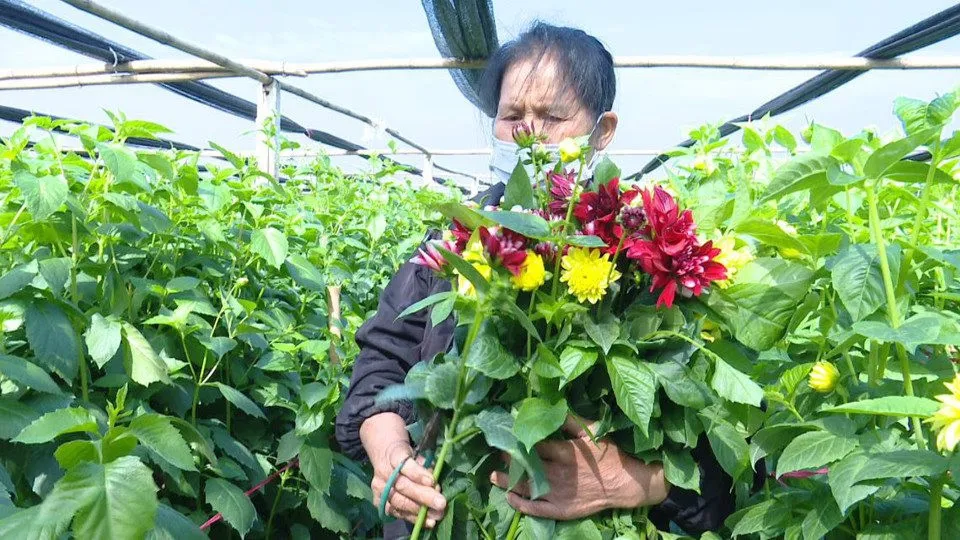Hanoi's flower regions to bloom as ecotourism hotspots
With just over a week to go, Hanoi's vibrant flower villages are buzzing with farmers busily tending and harvesting a wide range of flowers in preparation for the bustling Lunar New Year market in 2024.
These days, Me Linh District's flower village is heating up as customers swarm in to buy flowers for the Lunar New Year.
Vibrant flower villages in the run-up to Tet
| A flower farmer in Me Linh village is harvesting. Photos: Hanoimoi newspaper |
In a suburban area where more than 600 hectares of flowers are grown, mainly roses, chrysanthemums, medicinal herbs, dahlias, lilies and orchids, farmers have also been experimenting with new varieties such as French, Dutch and Thai roses in recent years.
According to Nguyen Hai Hoang, a flower farmer in Me Linh Commune (Me Linh District), he is busy these days selling roses, chrysanthemums and lilies to wholesalers.
"To meet the surge in demand for flowers during Tet, flower growers are busy tending and pruning the flowers to make them bloom beautifully," Hoang told hanoimoi newspaper.
Tich Giang flower village in Hanoi's Phuc Tho District is also busy during the biggest harvest of the year. Unlike Me Linh, where roses, chrysanthemums and lilies are the main crops, residents here grow a wide variety of potted plants, hanging baskets and flower carpets, including dianthus, impatiens, celosia, pansies and nasturtiums.
Hoang Van Trao from Tich Giang commune said his family had produced 10,000 hanging pots of dianthus, impatiens and celosia this year. With the favorable weather conditions and meticulous care in greenhouses and netting houses, the flowers look beautiful.
He added that the Tet flower market has seen relatively stable prices. So far, the flower growers have sold about 70% of their Tet production and expect to earn about VND500 million (US$20,534).
At the flower region in Tay Tuu Ward (Bac Tu Liem District), the hustle and bustle of buyers and sellers is making the flower village more vibrant than ever.
| A flower garden in the village of Tay Tuu |
Nguyen Xuan Dai, director of Hanoi's Department of Agriculture and Rural Development, said the city will expand the area under flower and ornamental plant cultivation to 8,000 hectares by 2025, focusing on districts such as Me Linh, Dan Phuong, Phuc Tho and Gia Lam.
Among them, there will be flower and ornamental plant regions applying high technology, with a scale of 20-50 hectares per region, he added.
These regions will mainly grow orchids, chrysanthemums and roses, as well as some imported flower varieties with high economic value for the domestic market and export, Dai said.
The Hanoi Department of Agriculture and Rural Development has worked with localities to review regional agricultural production to select suitable areas for flower and ornamental plant cultivation, where greenhouses, exhibition areas and gardens for tourism will be developed.
The Hanoi Department of Agriculture and Rural Development and 30 district and city governments have held spring flower festivals to create trade opportunities and help farmers boost sales.
According to the plan to restructure the agricultural sector by 2025, Hanoi aims to cultivate 8,000-9,000 hectares of various flowers, including about 500-700 hectares of high-tech flowers.
|













